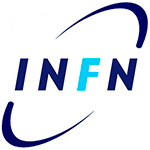Dr. Beatrice Polacchi
Multi-client distributed blind quantum computing over a linear quantum network architecture
The development of noisy intermediate-scale quantum processors and techniques to distribute entanglement among remote quantum nodes is paving the way for a quantum cloud, allowing users with minimal quantum resources to delegate computations to remote quantum servers. However, along with this exciting perspective, serious privacy issues arise, since users’ data may be exposed to malicious servers or other malicious clients. Therefore, universal blind quantum computing (BQC) was proposed [1] to allow a client, having a single-qubit source, to delegate quantum and classical computations to a remote quantum server while keeping hidden input, output and algorithm details. Despite demonstrations of single-client settings have been performed on different platforms, those of multi-client scenarios remain challenging. This is mainly due to the fact that most multi-client protocols need a large number of additional classical communication rounds. From an experimental point of view, this translates into the need to coherently store quantum states for time intervals incompatible with currently available quantum memory technologies. In the work reported in [2], we introduce a modular lightweight multi-client BQC protocol based on a linear quantum network architecture (Qline), with reduced quantum capabilities on the clients’ side, since they only need to perform single-qubit rotations. The main strength of our protocol lies in the use of a fully classical trusted third party (TTP) that secures classical communication between the clients and the server. Such a solution proves an efficient trade-off between time-latency on the server side and trust assumptions, while guaranteeing data privacy even when generalized to larger and more complex scenarios. We experimentally demonstrate such a protocol in a two-qubit two-client scenario within a versatile adaptive fiber-based photonic platform. In our platform, the TTP is embodied by an electronic circuit enabling active feed-forward of information, while the server is equipped with an electro-optical modulator (EOM) to enable measurement adaptivity, a key requirement to achieve determinism of the computation. Our results show that the computation is faithfully implemented and that the protocol is secure. Moreover, it is optimized from the hardware timing point of view, thus minimizing losses due to long-term storage of quantum states. Our platform is scalable and can be generalized to larger networks involving more than two clients and more complex resource states. For these reasons, we believe that our findings have insightful implications both from a theoretical and an experimental point of view. 1- A. Broadbent, J. Fitzsimons, and E. Kashefi. "Universal blind quantum computation." 2009 50th annual IEEE symposium on foundations of computer science. IEEE, 2009. 2- B. Polacchi et al. "Multi-client distributed blind quantum computation with the Qline architecture." Nature Communications 14.1 (2023): 7743.





